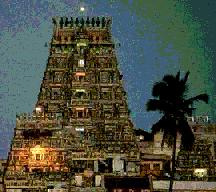 Pali
is one of ancient Indic languages, spoken in the Middle period. The Buddhist
Canon in Sri Lanka is written in Pali, so the language is still used as
a sacred one in Sri Lanka, Myanmar, Thailand, Laos, Cambodia and Vietnam.
But its homeland is India, and Pali originally was one of western dialects
which later acquired certain eastern characteristics. Later together with
Buddhism it spread within the South Eastern Asia, and many scientific,
religious and literature works were written in it already when in India
it was forgotten.
Pali
is one of ancient Indic languages, spoken in the Middle period. The Buddhist
Canon in Sri Lanka is written in Pali, so the language is still used as
a sacred one in Sri Lanka, Myanmar, Thailand, Laos, Cambodia and Vietnam.
But its homeland is India, and Pali originally was one of western dialects
which later acquired certain eastern characteristics. Later together with
Buddhism it spread within the South Eastern Asia, and many scientific,
religious and literature works were written in it already when in India
it was forgotten.
There are in fact four kinds of Pali: the Canon Pali, the literature Pali, the commentary Pali and the modern Pali; the last one has got a significant number of local borrowings and peculiarities and is no longer classical. Pali phonetics is rather simple: 5 simple vowels, no diphthongs and sonant vowels, aspirated and non-aspirated consonants. Pali phonetic laws prohibit the usage of a great number of fricative consonants together, all words end in a vowel.
In morphology the number of vowel interchanges decreased in comparison with Sanskrit; there is a trend of unification of types of noun declension and verb conjugation, and the number of cases is six at maximum. The verb has only three tenses and two aspects: ancient Indic languages Vedic and Sanskrit used much more of them. The system of syntax is well developed and uses many auxiliary parts of speech in analytical constructions.
Pali is interesting for its vocabulary which is totally unnatural and is created only in order to reflect the ideas of the religion.